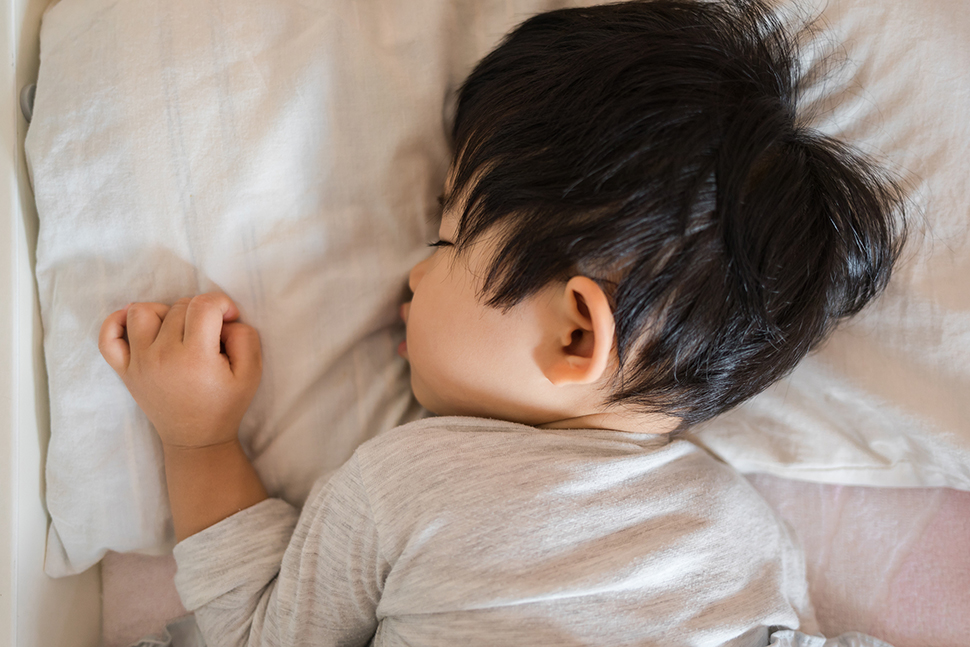- Home |
- Search Results |
- Tips for getting children to sleep better
Tips for getting children to sleep better
For most parents, an obsession with sleep (or lack of!) begins as soon as baby is born. But while getting some much-needed shut-eye is often a parental preoccupation, the right amount of sleep is just as important for children. Adopting a consistent, relaxing bedtime routine has benefits for everybody.

Bedtime starts in the morning
Encouraging your child towards a set wake-up time helps them develop a consistent sleep pattern. It’s easier said than done, of course: if you have an early riser or (lucky you) a child that loves a lie-in, you might need some help to change those behaviours. From blackout blinds to special clocks, there are numerous products to help them sleep longer, and for those that do love their beds, avoid that wide-awake-at-bedtime-nightmare by limiting lie-ins.
Naps are good
Sleeping the day away might seem counterproductive when you’re trying to get your child to go through the night, but an age-appropriate pattern of naps can work wonders. Children need a lot of sleep – for toddlers, it’s between 11 and 14 hours. It’s unlikely they will get it all during the hours of darkness, so naps are essential as an overtired child will find it much harder to get to sleep. You don’t have to be regimented, but daytime sleeps at appropriate intervals can be invaluable in the battle against bedtime sleep-fighters.
Limit screen time before bed
There’s nothing wrong with a little TV, but recent research suggests that light from screens can interfere with the production of the sleep hormone melatonin. This is why many experts recommend switching off all devices at least two hours before bedtime – and that goes for grown-ups, too!
Have a consistent bedtime routine
Introducing a simple and consistent bedtime routine early on can be the key to encouraging good sleep habits. It doesn’t have to be long: 20-30 minutes is a good benchmark. Babies respond well to familiarity, and establishing a calm pre-bed wind-down at the same time every night helps them anticipate what’s coming next and understand the difference between day and night.
Start with a bath and/or a massage
Many – though not all – babies love bathtime, so beginning your routine of relaxation with a splash about in the tub can be a fun way to kick things off. It’s great for signalling to your child that the day is over and it’s nearly time to go to sleep. A gentle massage after bathtime is another way to help them wind down and could be an alternative calming signal for those that aren’t big fans of the water.
Welcome to bedtime
The room your child sleeps in is also important – making sure the temperature and lighting are right and the cot or bed is comfortable and welcoming helps aid relaxation. Blackout blinds and fans can help you deal with hot summer evenings, and even if your baby loves nightlights or musical toys, it’s a good idea to turn off blinking lights and bright screens. Whatever environment they like, consistency is the key!
Tell me a story
This is the best part of bedtime, in our opinion! Research shows that reading a story before turning out the light can reduce stress levels by as much as 68% – and that goes for adults as well. So getting your child into the bedtime story habit is one sleep association you can absolutely indulge. Settle them into bed with their favourite toy or comforter, sit back and get reading. Even if they’re too young to understand the words they will love hearing your voice, and you get to introduce them to the wonderful world of books and stories.
Stories to help them sleep
Bath, Book & Bedtime
Discover all our best book recommendations for kids as well as helpful bedtime tips from experts.